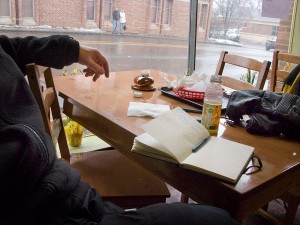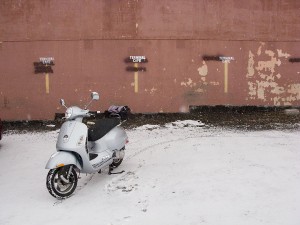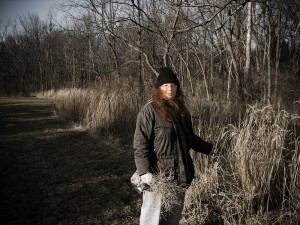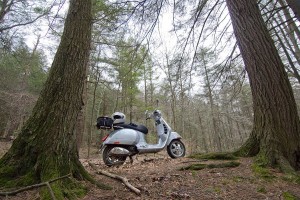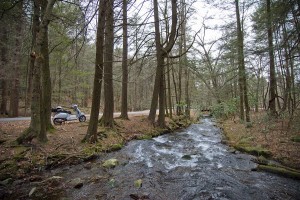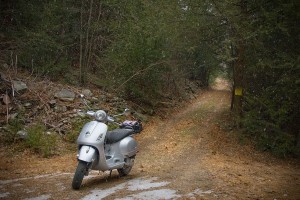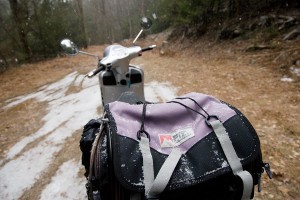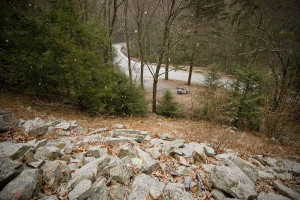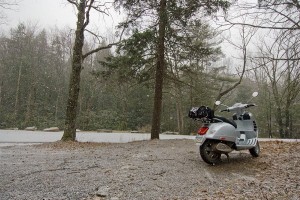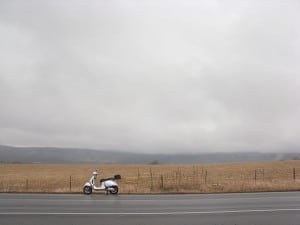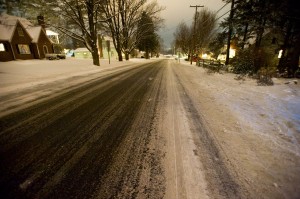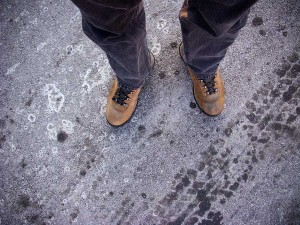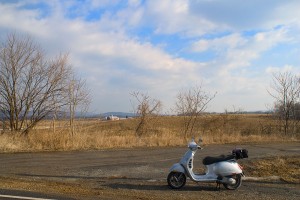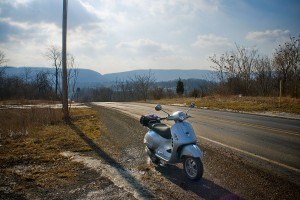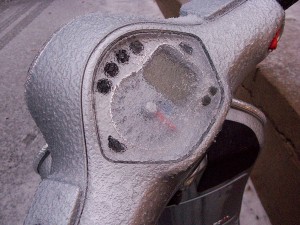 At 5:15 PM when I left my office the Vespa was coated in a glistening sheen of ice. How I got there and what I would do next was a result of calculating risk. Standing by the scooter I could see traffic moving on wet, slushy roads. Heavy skies reduced light levels. With temperatures hovering near freezing and moisture in the air I knew visor fogging would be an issue. My brain was working, trying to calculate my next action.
At 5:15 PM when I left my office the Vespa was coated in a glistening sheen of ice. How I got there and what I would do next was a result of calculating risk. Standing by the scooter I could see traffic moving on wet, slushy roads. Heavy skies reduced light levels. With temperatures hovering near freezing and moisture in the air I knew visor fogging would be an issue. My brain was working, trying to calculate my next action.
Weather is predictable to a point. In warm weather unexpected changes in temperature or precipitation are challenges most often met with gear adjustments and minor changes in riding. Unexpected changes in cold weather involve more risk and can’t be overlooked.
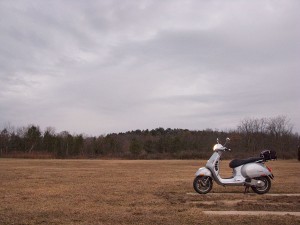 I stood outside with the dog in the morning weighing the pros and cons of riding to work. The forecast called for two brief periods of snow or sleet followed by rain later in the evening. The road was dry and the skies looked heavy but no hint of moisture yet. I made the decision to ride to work knowing that it could get worse when it was time to go home. I had my usual backup plan ready — park the scooter in the parking garage and take the bus home.
I stood outside with the dog in the morning weighing the pros and cons of riding to work. The forecast called for two brief periods of snow or sleet followed by rain later in the evening. The road was dry and the skies looked heavy but no hint of moisture yet. I made the decision to ride to work knowing that it could get worse when it was time to go home. I had my usual backup plan ready — park the scooter in the parking garage and take the bus home.
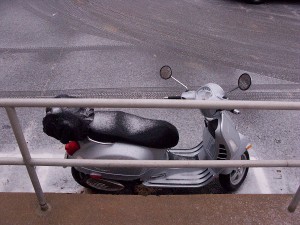 By mid-afternoon what I thought would be a passing flurry or shower of sleet had developed into something more persistent. I kept an eye on the street outside my window and the progress of traffic. I was already calculating risk. When I walked outside at the end of the day it was decision time.
By mid-afternoon what I thought would be a passing flurry or shower of sleet had developed into something more persistent. I kept an eye on the street outside my window and the progress of traffic. I was already calculating risk. When I walked outside at the end of the day it was decision time.
The accumulation of sleet and snow in the parking lot would be heavier than anyplace on the ride home. It was the safest place to test for traction and just a tiny bit of throttle pushed the rear wheel sideways. Head up, eyes forward, and gentle throttle would be the rule of the ride.
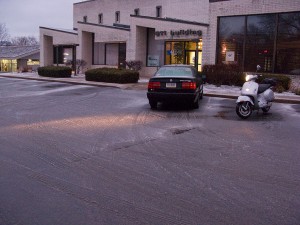 Two stops would slow me down, one for fuel, and a second for cash at the ATM. Walking back to the scooter with a pocket full of money I met a good Samaritan. A neighbor saw the scooter and me and thought I might need a ride home. My experience on the road for the past four years have brought many would be good Samaritans. It’s nice to know that help is available if needed. In this case I politely declined and thanked him for the offer.
Two stops would slow me down, one for fuel, and a second for cash at the ATM. Walking back to the scooter with a pocket full of money I met a good Samaritan. A neighbor saw the scooter and me and thought I might need a ride home. My experience on the road for the past four years have brought many would be good Samaritans. It’s nice to know that help is available if needed. In this case I politely declined and thanked him for the offer.
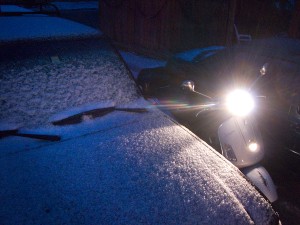 By the time I pulled into the driveway it was almost dark, I was tired, and the sleet was still coming down. The ride home was not as bad as other unexpected winter rides but it did require constant attention and adjustment. And more than a few four-wheeled vehicles had to practice patience as I made my way down the road slower than they would like to go. Definitely below the posted maximum speed limit for ideal conditions. Not many people look at those signs that way.
By the time I pulled into the driveway it was almost dark, I was tired, and the sleet was still coming down. The ride home was not as bad as other unexpected winter rides but it did require constant attention and adjustment. And more than a few four-wheeled vehicles had to practice patience as I made my way down the road slower than they would like to go. Definitely below the posted maximum speed limit for ideal conditions. Not many people look at those signs that way.
For those of you who have not been caught on the road when snow or sleet appears the pictures look more daunting than the actual ride. I made a careful assessment of the road surface and knew there would be adequate traction, options for ways out of situations with other vehicles, and enough experience to negotiate other hazards on the way.
I suppose the lesson here is to look beyond the image of sleet and snow and really see what is there.
